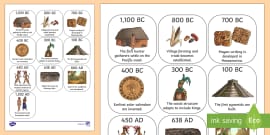

Revolt continues, however, to plague the Spaniards off and on for the rest of the century. The Spanish are finally able to subdue the Maya and put an end to Maya resistance. Within a century, 90 per cent of Mesoamerica's native populations will be killed off. The arrival of the Spanish ushers in Old World diseases unknown among the Maya, including smallpox, influenza and measles. The Spanish first arrive on the shores of Yucatan under Hernandez de Cordoba, who later dies of wounds received in battle against the Maya.

Guerrero later becomes an implacable foe of the Spaniards and does much to help the Maya resist Spanish rule in Yucatan. He defects to the Maya, tattooing his face, piercing his ears and marrying into a Maya noble family. Shortly after this, Yucatan degenerates from a single united kingdom into sixteen rival statelets, each anxious to become the most powerful.Ī Spaniard named Gonzalo Guerrero is shipwrecked and washed up on the eastern shore of Yucatan. There is a rebellion within Mayapan and the city is abandoned by 1461. The Itza begin building the city of Mayapan. The Itza abandon Chichen Itza for reasons unknown. A people known as the Uicil-abnal, which later takes the name Itza, settles in the desolate city. The city of Chichen Itza is abandoned by the Toltecs. Northern Maya cities begin to be abandoned. Maya cities in the northern Yucatan continue to thrive. The Classic Period of Maya history ends, with the collapse of the southern lowland cities. Trade between Maya city-states declines, and inter-state conflict increases.Ĭonstruction ceases in Tikal, marking the beginning of the city's decline. Long-standing Maya alliances begin to break down. The Emperor Pacal dies at the age of 80 and is buried in the Temple of the Inscriptions at Palenque. The Maya city of Tikal becomes the first great Maya city, as citizens from Teotihuacan make their way to Tikal, introducing new ideas involving weaponry, captives, ritual practices and human sacrifice.Īn unknown event destroys the civilization at Teotihuacan, along with the empire it supported. Tikal becomes the largest city-state in Mesoamerica, with as many as 500,000 inhabitants within the city and its hinterland. The Maya highlands fall under the domination of Teotihuacan, and the disintegration of Maya culture and language begins in some parts of the highlands. The city of Teotihuacan is founded and for centuries is the cultural, religious and trading center of Mesoamerica. The Maya adopt the idea of a hierarchical society ruled by nobles and kings. The earliest known solar calendars carved in stone are in use among the Maya, although the solar calendar may have been known and used by the Maya before this date. Village farming becomes established throughout Maya regions. The rise of the Olmec civilization, from which many aspects of Maya culture are derived.

The creation of the world takes place, according to the Maya Long Count calendar. Some centers are abandoned and written records stop.The first hunter-gatherers settle in the Maya highlands and lowlands.


 0 kommentar(er)
0 kommentar(er)
